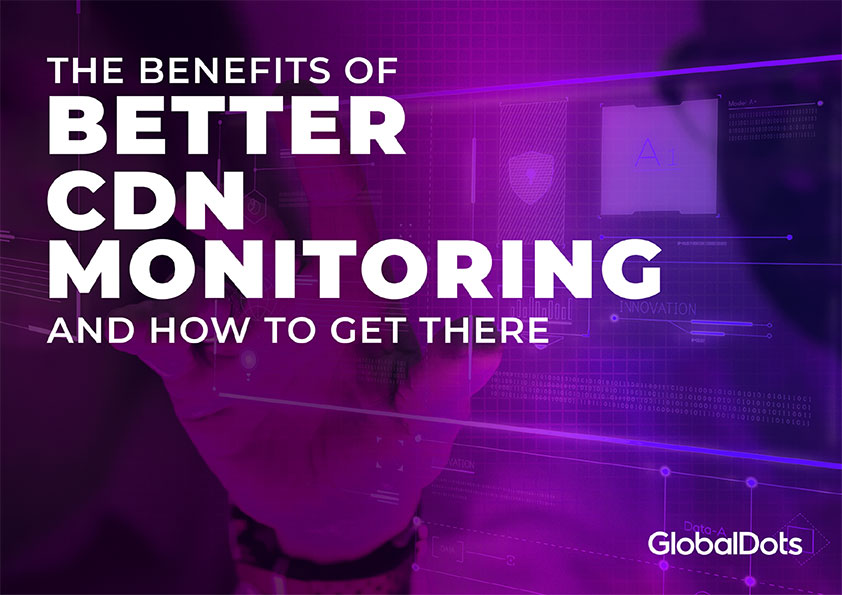Sign up to our Newsletter
Utilising a CDN is an essential part of your web scaling strategy. Heavy CDN users rely on powerful monitoring solutions to improve their observability, gain new operational capabilities and develop key insights into their customers… but how do you pick the right observability tool? Let’s look at 3 key capabilities that any CDN user should demand from an observability solution.
1. Performance in Real Time
The power of CDN log data is the volume, uniformity and speed at which it is generated. You need an observability platform that can match your data pipeline. You don’t want to find out, after 15 minutes, that someone has been successfully targeting your system with a DDOS attack and you are missing your SLA for the last 5 minutes. You need to know the instant something takes a wrong turn. This is a key marker of a high performing operations team.
How One AI-Driven Media Platform Cut EBS Costs for AWS ASGs by 48%

Most observability platforms come with some sort of alerting feature built in, but the key metric here is whether those alerts are real-time. 85% of organisations surveyed said that real time data was either crucial or very important to their overall data strategy. This means you’ll need an observability platform that can process and help you make decisions quickly.
Your observability platform needs to have decision making and alerting early on in its processing, and this sometimes means your platform will need to produce insights, even before indexing. It’s rare to find published SLAs on alert times, since there are so many moving parts that are out of the control of observability providers, such as the stability of the alerting system. For example, if you want your alerts to trigger in slack, and slack is currently experiencing an outage, then the SLA can’t be met.
2. Visualisation > Analysis > Insights
CDN logs contain a vast array of metrics that have tremendous value on their own. An observability platform needs to be able to parse and understand these metrics, so they can be automatically extracted, graphed, analysed, tracked over time and, ultimately, converted into actionable insights.
The transformation of logs to metrics is a key capability for any CDN user, because most CDN logs provide key information about HTTP request and response body sizes, header values, browser versions, timestamps and much more. These are vital operational metrics to help you develop a deep understanding of the load your site is experiencing.
For example, if your solution relies heavily on graphical resources, then sudden changes in traffic volume and trends are incredibly important for you, because this can mean a significant, material difference in your CDN costs. Without the necessary visibility, you won’t find out until it comes time to pay the bill from your CDN provider. With the right monitoring, you can detect the spike and make efforts to cache, compress or remove the in-demand resource.
And they need to generate reports for you too
It’s not enough for the site to give you access to a few metrics. Your monitoring solution needs to render this information out in an easily digestible format, so that you can quickly understand what’s going on with your CDN. This means a clean, crisp user interface, with the option to extract data into shareable, well-designed reports, so that you’re not spending your time aligning text boxes in a spreadsheet and, instead, are investing that time in the development of creative solutions to the problems you want to solve.
3. Cost optimization
CDNs generate a vast amount of log information. Huge volumes of traffic result in millions of log lines. If you’re not careful, all of this information will translate into an expensive monitoring solution. When you’re working with an observability platform, you need to find one that allows you to decide how your data is processed. Crucially, you need to decide which information you even want to index. Indexed data is typically expensive to hold, because it sits in rapid access memory, and not all of your data needs this kind of query performance.
When you’re looking at the market, there should be tiered pricing, depending on how available your data needs to be. Most teams find that they only need around 20% of their data to be available for high speed queries, with the rest needed only for visualization and compliance. With effective data storage optimisation, this can translate into a 60% reduction of your logging costs.
Conclusion
Choosing the right monitoring solution for your CDN is not simple. We’ve only scratched the surface here. On top of the 3 criteria outlined here, there are many different avenues of investigation you should go down before making an investment. Check out our free eBook to gain a full, in depth understanding of how to make the best decision for your CDN, your product and your company.
Contact GlobalDots for commitment-free consulting & implementation of your ultimate CDN observability solution.







